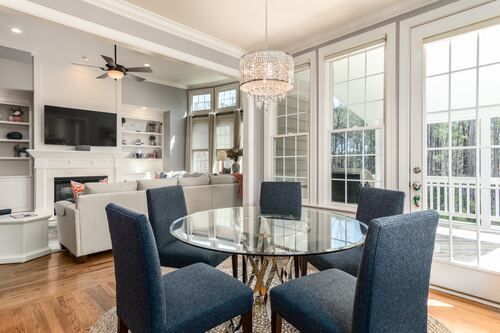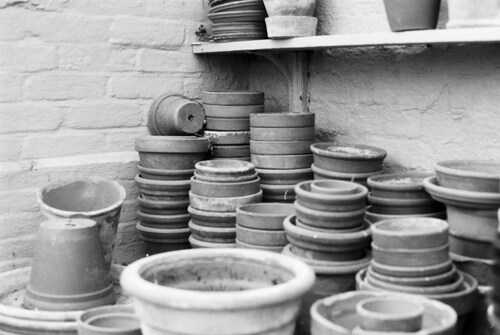Every year, fire incidents devastate homes, businesses, and communities across the UK, highlighting the critical need for smarter, safer building practices. While modern architecture often prioritises aesthetics and functionality, fire safety can sometimes take a back seat—until it’s too late. The consequences of overlooking fire-safe design are not just financial but can tragically cost lives.
Fire-safe building design isn’t just about meeting regulations; it’s about creating spaces that actively minimise risks and protect occupants. From innovative materials to intelligent layouts, the principles of fire safety can be seamlessly integrated into a building’s blueprint without compromising its purpose or appeal, and as construction continues to evolve, understanding how to design for fire resilience is now essential.
Importance Of Fire-Safe Building Design
Fire-safe building design and passive fire protection has become a vital responsibility that safeguards lives and investments. When designing any space, you might prioritise appearance and practicality. Yet, overlooking fire safety could lead to devastating consequences. Fires don’t discriminate – they threaten residential homes, workplaces, and public spaces alike.
Think about materials carefully. Does your building plan include elements like fire-resistant walls or flame-retardant finishes? Using non-combustible materials can slow fire spread and buy precious seconds for evacuation. Designers might select concrete or treated timber, which resist high temperatures better than standard options. Isolating ignition sources, such as electrical systems, further protects your space.
Do your layouts allow for swift evacuation? Corridors, stairwells, and doorways must remain easily accessible even under challenging conditions. A design restricting movement during a fire can trap individuals. Open-plan designs, if poorly thought out, may worsen fire spread. Balancing aesthetics with compartmentalisation ensures smoke barriers can limit harm.
Consider ventilation and smoke management. Are fire dampers installed within HVAC systems? Without these, smoke fills spaces quickly. Strategic placement of vents and windows controls airflow, reducing suffocation risks. Systems like sprinkler mechanisms detect fires early, injecting suppression measures immediately. Is your building equipped for such fast action?
Fire-safe design isn’t optional, and regs like the UK’s Building Regulations and BS 9999 standards create clear obligations. Adherence ensures not just compliance, but confidence in your project’s resilience. Engage fire safety specialists early in your planning process to refine strategies. Do your designs fulfil these critical requirements?
Ultimately, successful fire-safe buildings protect occupants while preserving assets. Next time you approach a project, ask yourself – does it defend against the unpredictable? Fire-safe design isn’t only about safety. It’s about ensuring longevity and trust.
Key Principles Of Fire-Safe Design
Preventing fires starts with choices you make early in the design process. Using non-combustible materials like metal cladding or flame-retardant timber can significantly reduce ignition risks. Position electrical systems carefully; faulty wiring or overloaded circuits might cause unseen hazards. Consider firebreak zones. For larger buildings, these provide additional barriers to slow the potential spread of flames. Active measures, such as automatic fire detection systems, can alert occupants quickly, giving valuable time to respond.
Design choices influence how long your building withstands exposure to fire, too. Fire-rated doors and compartmentalisation resist the spread of heat and flames, creating zones of protection. Materials like concrete, gypsum and treated steel offer higher fire ratings, enhancing structural integrity during incidents. Don’t forget surface treatments—fire-resistant paints and coatings can delay a blaze consuming structural elements. Align these design components with legal standards, ensuring compliance while fortifying resilience.
Evacuation also relies on clear, well-planned routes. Stairwells enclosed by fire-resistant materials protect escape paths from smoke and flames. Illuminated exit signage can guide occupants even under low visibility. Emergency lighting enhances visibility in critical moments. Ensure multiple exits are accessible so overcrowding and confusion do not prolong escape. Simulation software aids planning, testing how your design performs under evacuation scenarios and identifying weakness, before occupants ever step inside.
Materials And Technologies In Fire-Safe Building Design
Advancements in fire-safe design rely heavily on materials and technologies that reduce risk and improve resilience. Choices you make here determine your building’s resistance to fire and its potential to protect lives.
Fire-Resistant Building Materials
Materials designed for fire resistance alter how a fire behaves, limiting its strength and spread. Non-combustible materials like concrete and steel stand firm under intense heat. Gypsum plasterboards might delay structural damage, adding crucial time for evacuation. Fire-rated glass creates barriers but maintains visibility for coordinated exits. Even treated timber resists ignition longer than untreated wood. Selecting these materials increases durability, lessens collapse risk, and complies with UK fire safety requirements.
Modern Fire Safety Technologies
Technology in fire control helps you monitor, detect, and suppress threats more effectively. Intelligent fire alarm systems identify smoke or heat early and notify occupants instantly. Automated sprinklers, paired with heat sensors, control flames before widespread damage occurs. Fire-resistive coatings applied to steel structures slow thermal weakening, adding resilience. Smoke detectors with integrated IoT systems offer real-time updates directly to your device. These technologies work together to enhance both detection accuracy and system responsiveness.
Regulatory Standards And Guidelines
Regulatory standards establish the framework for ensuring fire safety in building design. These guidelines shape construction practices, focusing on prevention, containment, and evacuation measures to protect lives and property.
Building Codes For Fire Safety
UK building codes, such as Approved Document B of the Building Regulations, define fire safety roles for construction projects. These codes address structural integrity, escape routes, and fire resistance. You might find requirements for installing fire detection systems, ensuring access for emergency services, or using fire doors in communal areas. Adhering to these ensures compliance and occupant safety.
BS 9999 offers a flexible, risk-based approach, unlike prescriptive measures. It considers building use, design, and occupancy type when determining fire safety solutions. You’ll encounter guidance on compartmentalisation or smoke control systems tailored to particular needs.
International Standards Comparisons
Regulations like NFPA (National Fire Protection Association) standards in the US or the European EN 13501 ensure fire-safe practices globally. These set precedence for fire resistance or sprinkler system design. However, approaches vary by region.
For example, while EN 13501 standardises material testing under fire, NFPA codes often emphasise system performance. As you explore international frameworks, you might notice stricter requirements for residential high-rises in some regions compared to UK guidelines, reflecting contrasting regional priorities and risks.
Challenges And Future Trends In Fire-Safe Building Design
Balancing cutting-edge designs with fire safety presents constant challenges, while evolving technologies and global attitudes shape emerging trends. You face a dynamic landscape where maintaining safety in the built environment often demands innovative thinking.
Common Challenges
Urbanisation increases complexity in design, testing your ability to implement fire safety in dense, multi-use spaces. High-rise buildings can complicate evacuation plans and necessitate advanced fire suppression systems. Material selections present another hurdle as you figure out cost, sustainability, and fire-resistance properties. Combustible cladding, highlighted in past incidents, underscores risks when choices aren’t carefully vetted. Integrating modern safety tech into older infrastructures pushes boundaries further. Balancing compliance with creativity remains a demanding task.
Innovations And Emerging Practices
Smart technologies redefine how you approach fire safety. IoT-enabled detectors, integrated alarms, and AI-driven suppression systems enable swift responses to threats. New materials like graphene-reinforced composites might replace traditional options, offering lightweight yet fire-resistant solutions. Modular compartmentalisation in structural design promises enhanced containment during fires. Resilient glazing and advanced coatings push aesthetics into harmony with safety. Digital twins emerge, allowing you to simulate and optimise designs before construction begins. Your drive for safer buildings finds alignment with sustainable, adaptable innovations.
Last Thoughts
Prioritising fire-safe building design is an investment in both safety and resilience. By embracing innovative materials, advanced technologies, and thoughtful layouts, you can create structures that not only meet regulatory standards but also protect lives and assets. As the construction landscape evolves, integrating fire safety into every stage of design is a fundamental responsibility. By staying informed and adopting forward-thinking practices, you’re contributing to a safer, more sustainable future for the built environment.



